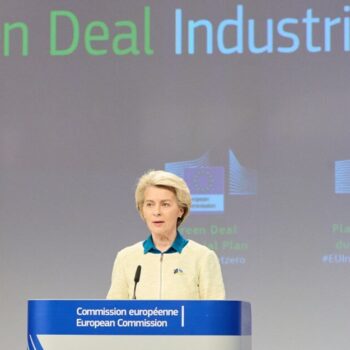In November 2018, the European Commission published a “Strategic Vision for a Climate Neutral Europe” by 2050. Its eight scenarios reveal a fundamental transformation of Europe’s future energy system and in particular the natural gas sector. This raises the question for policy makers, investors and businesses on how to best manage the uncertainty arising from this transformation.
What questions for natural gas arise from the long-term strategy?
How to manage a transition from volume to value?
The role of unabated natural gas reduces drastically across all scenarios put forward by the Commission. Electrification, energy efficiency, increased cross-border exchanges and the smartening of the grid eat into the share of natural gas. As a result, natural gas is expected to only represent 3-4% of total EU energy consumption by 2050 in the scenarios that are in line with the Paris Climate Change Agreement. In some sectors, natural gas is replaced with other forms of gaseous energy carriers, but there will still be an overall drop in volumes of gaseous energy carried in the European energy system. This raises questions for transition management: How will the infrastructure network need to reshape? What does that mean for today’s investment or maintenance decisions? What will lower levels of utilisation mean for energy bills?
How will potentially differing sectoral pathways add up?
Currently, natural gas is a crucial input into many sectors of the European economy. In its two largest end-use sectors, industry (36% of final energy consumption) and households (41%), it is used to produce high temperature heat, as a feedstock and for household heating and cooking. Natural gas also provides a fifth of the electricity generated in Europe.
Technological alternatives for these different sectors are emerging at different speeds. In industry, a combination of efficiency, circular economy and materials or process innovation could curb demand for fossil gas drastically, and the availability of lower carbon gaseous carriers might play a significant role in shaping demand for fossil gas and other fossil resources. Pilots to produce fossil-free cement and steel are under way, but it is unclear when these solutions could be deployed at scale. In households, district heating, insulation, and heat pumps provide alternatives to gas. In some agricultural areas biomass could play a role in heating. Gas for power generation is already seeing increased competition from renewable energy, and the role of natural gas and its alternatives will soon concentrate on seasonal balancing where few options are currently on the horizon.
This diverse set of pathways means that demand for gaseous energy carriers might no longer come from the same places as today. This will have implications for planning and funding of our future energy and infrastructure networks.
How to make infrastructure decisions given the variety of possible different pathways?
The Commission’s vision also distinguishes pathways by type of fuels. One pathway sees a big uptake in hydrogen which would require an adaptation of transmission, distribution and end-use infrastructure – or a complete rethink of the network where hydrogen is produced and consumed in industrial clusters. Those pathways that use a lot of biogas will see this largely consumed at distribution level. The pathways using renewables for power-to-gas require an even higher build out in generation capacity. The current tools at hand for investors – public or private – to understand the investment implications of those future pathways are not sufficient.
Taking decisions in the face of uncertainty
Focussing on no regret
There are a number of technological solutions that Europe will need deployment at great scale across these scenarios, including energy efficiency and electrification of heating and transport, and, district heating. All Commission scenarios imply an acceleration of the deployment rate of renewable energy beyond what has been observed between 2000-2015.
Improving the understanding of transition pathways
The vision clearly illustrates two clear trends: (1) from high volumes of gaseous energy carriers to using less for high value use, (2) from a natural gas system based on imports to one that consumes largely domestically produced forms of gases – be it hydrogen or methane. With trends clear, a better understanding of how this transition will be managed is needed. Understanding what it means for investments and system planning in sectors and regions more concretely will help a transition that keeps consumer bills low. An update of the analysis of the EU’s energy network infrastructure priorities which currently dates from much before the Paris Agreement, could be one way to do this.
A taxonomy for new forms of gases
Each of the potential options for gas debated in the vision, such as natural gas, hydrogen from electrolysis and steam methane reforming or biogas, come with different climate or infrastructure implications. A clear taxonomy for these new forms of gas will help decision makers and investors assess future value and risks of their assets or compare results between countries national energy and climate or infrastructure development plans.
Evaluate the uncertainties of different choices
The uncertainties associated with each of the scenarios put forward by the Commission need to be exposed and evaluated. Upscaling of power-to-hydrogen/gas from electrolysis and biogas might face significant supply-side limitations – some estimates see a maximum potential of half of that used in the Commission’s vision. Relying on hydrogen from fossil gas will however require progress in two areas that have in the past been lagging behind expectations: the deployment of carbon capture and storage and methane abatement in the gas industry. Articulating the uncertainties and proposing ways to monitor progress will help to focus research and development efforts and adapt strategies if progress continues to lag behind.


